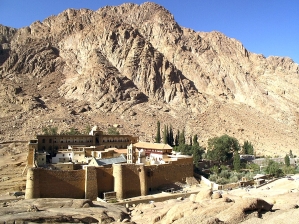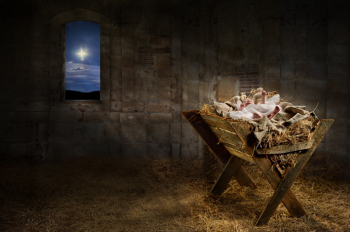
Meeting on a possible forced closure of the world’s oldest continuously active Christian monastery, Greek and Egyptian officials last week stated the monastery and its monks would be protected but provided no clear legal guarantees on how that would be achieved.
Orthodox Christians were shocked when news leaked on May 28 of an Egyptian court stripping away more than 1,500 years of ownership rights the monks had over the Sinai monastery and the surrounding lands and replacing them with “usage rights.” Several outlets mistakenly reported that the monastery grounds were going to be immediately seized and the monks expelled.
Greek and Egyptian officials made no clear resolution about the status of the Monastery of St. Catherine at Mount Sinai, but the Greek delegation characterized the gathering held on Wednesday (June 4) as “productive.”
“Today we discussed with the Egyptian Foreign Minister, issues concerning the Monastery of St. Catherine at Mount Sinai,” Greek Foreign Minister George Gerapetritis said in a statement following the meeting. “We agreed to work in the immediate future toward securing the rights of the monastery, as well as its legal status.”
In a phone conference two days later with Greek Prime Minister Kyriakos Mitsotakis, Egyptian President Abdel Fattah El-Sisi “stressed Egypt’s unwavering commitment to preserving the unique and sacred religious status of St. Catherine’s Monastery,” according to an Egyptian press release. It stated that the judicial ruling aligned with “Egypt’s dedication to the sanctity of religious and ecclesiastical sites and reaffirms the unique heritage, spiritual and religious standing of St. Catherine’s Monastery.”
Founded in 565 A.D. under the orders of Byzantine emperor Justinian I, St. Catherine’s Monastery is the oldest continually inhabited Christian monastery in the world and arguably Christendom’s most historical monastery. It is located in the area of Mount Sinai where, according to tradition, God reveled Himself to Moses through the miracle of the Burning Bush. The Greek Orthodox Church also claims that the monastery is located near the site where Moses received the Ten Commandments.
The monastery has a library that contains thousands of ancient manuscripts considered priceless to many Christians. The Codex Sinaiticus, a Greek Bible that contains the oldest complete New Testament dating back to 325 A.D., was found in the library in 1844.
The library also contains a copy of the Covenant of Muhammad. Also known as the Ashtiname of Muhammad, it is a charter where Muhammad ordered Muslims to protect the status of the monastery, refrain from persecuting those living there and exempt them from the normal taxation requirements imposed on other conquered Christians. Muhammad ordered his followers to obey the treaty until “the Day of Resurrection and the end of the world.”
The court’s decision designated the monastery as an archaeological site and placed it under the supervision of the Supreme Council of Antiquities. Critical areas adjacent to the monastery that have been essential for the monk’s day-to-day lives, such as its gardens, olive groves and springs, will all fall under control of the council. Egyptian leaders have offered assurances, however, that ownership by the state does not necessarily mean daily control or intrusion into the religious lives of the monks.
The record of the Egyptian government regarding places of Christian worship has been mixed at best. Egypt has long faced criticism over its draconian policies restricting construction or renovation of church buildings. According to Egyptian human rights activists, progress has been made recently to address the problem, but much work remains.
The government has conducted renovation projects of Coptic monasteries, but the renovations were largely tied to ongoing tourism development projects. In other development projects, church buildings have been bulldozed in the name of tourism, such as at the excavation project to restore the Avenue of Sphinxes in Luxor.
Critics of the legal order say the ruling is legal overreach to accomplish Egypt’s “Great Transfiguration Project,” a tourism-driven development project that hopes to transform Mount Sinai into a “world-class spiritual and tourism destination.” The project includes five-star hotels, shopping centers, mountain chalets, restaurants, outdoor recreational facilities and a hotel with panoramic views of the monastery and Mount Sinai.
The project is backed by Egypt’s Ministries of Urbanization, Tourism, and Environment along with Egyptian and international investors. Greek critics of the project claim it places money over the site’s unique needs and will destroy the monastery, turning it instead into a “spiritual Disneyland.”
Egypt ranked 40th on Open Doors’ 2025 World Watch List of the 50 countries where it is most difficult to be a Christian.





